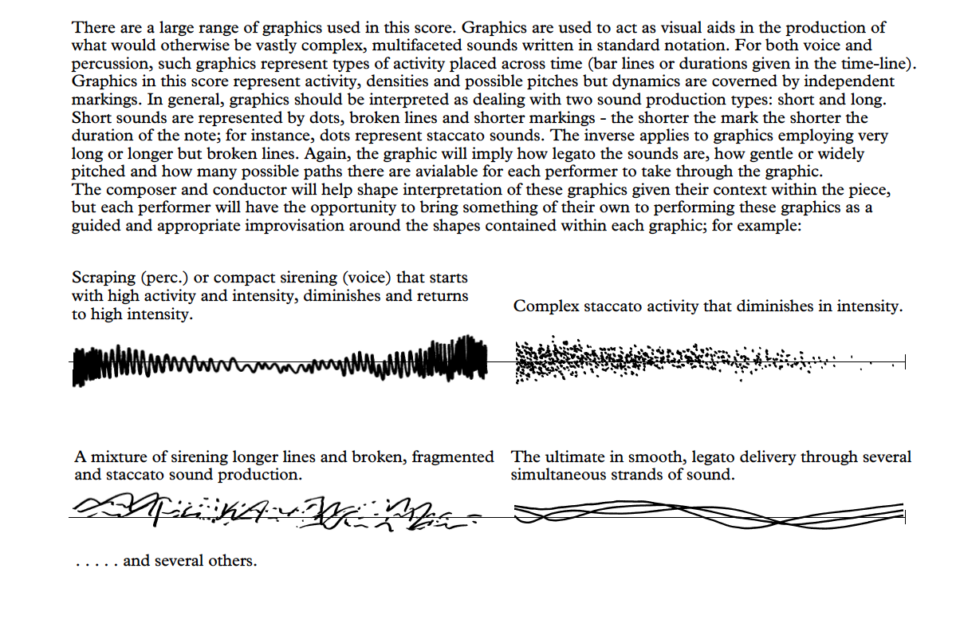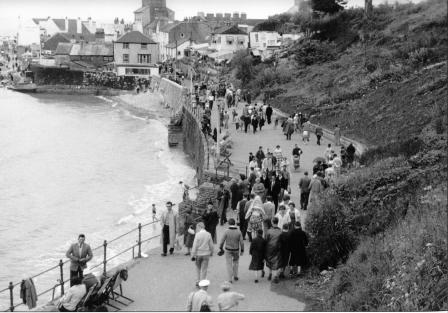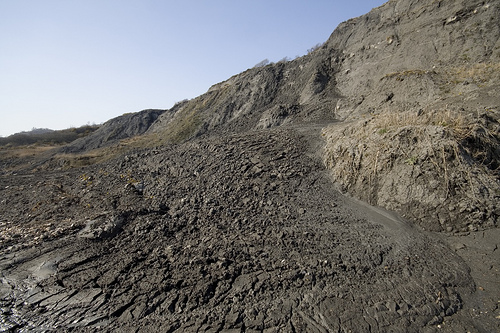Sturzstrom: for massed choirs
Sturzstrom: now complete!
October 14 2011,
sturzstrom (a landslide event for voices) is now complete.
This has been perhaps the most demanding of pieces for me to write. In trying to obtain the vocal effects and structures I wanted I have had to ‘project’ and contain the various possibilities that the notational methods I have chosen to deliver sturzstrom could encompass. In other words, in my usual scores, every detail is controlled and notated precisely, so I know exactly (more or less) what it is I’m going to get in performance. sturzstrom has been totally different in that there is no definitive performance, but a performance that exists within the parameters set by the coaching and shaping of the music with the performers as part of its being brought into being.
To help clarify this process and the expectations of delivery and performance I have written extensive performance notes in the score.
sturzstrom has been composed as ‘a landslide event for voices’ meaning the work attempts to depict landmass movement and geological process as found along the ‘Jurassic Coast’ of East Devon and Dorset. Naturally, this depiction is not a scientific reconstruction of these processes in sound; rather, an imaginative response to these forces and outcomes as contrived in the composer’s imagination and amplified by the individual contributions of the performers. sturzstrom has been designed to utilise the voice rather than singing ability and is conceived and notated in such a way as to enable maximum participation from individuals with little or no experience of singing or reading conventional music notation.
Inevitably, this involves some new learning to understand and interpret the signs and symbols used in this score as well as the general concept and approach used by the composer to articulate his ideas. Both the composer and conductor will be responsible for explaining, shaping and guiding the choir’s responses to the notation, graphics and text.
 Along with the massed voices there are three strands of pebble percussion for younger performers; the first two strands deal with a more advanced interprutatrion followed by a thrid strand, a pebble chorus, performed by children of primary school age adding a further layer of mass percussive activity. As in the voice-work, the various strands of the percussion section are designed to be performable by the widest range of young people with interpretation of the various notations being facilitated by the conductor and composer. For authenticity, It is also desirable that each participant in the percussion section has found their own performance instrument (stones and pebbles) from the stretch of coastline featured in this work.
Along with the massed voices there are three strands of pebble percussion for younger performers; the first two strands deal with a more advanced interprutatrion followed by a thrid strand, a pebble chorus, performed by children of primary school age adding a further layer of mass percussive activity. As in the voice-work, the various strands of the percussion section are designed to be performable by the widest range of young people with interpretation of the various notations being facilitated by the conductor and composer. For authenticity, It is also desirable that each participant in the percussion section has found their own performance instrument (stones and pebbles) from the stretch of coastline featured in this work.

sturzstrom is designed for massed choirs and will work best with large numbers of individuals, employing as it does flocking and ‘crowd sourcing’ techniques to initiate complex textures, harmonies and articulations of its material, be they sung or spoken.
The structure of the score leads to an intense climax (the landslide event) but along the way, geological text from scientific papers is used to add vocal content to the music; this content is articulated in a variety of ways using non-conventional notation and graphic notation (explained below). The work covers the Mesozoic geological time period and includes the layers of strata found in this time period between Exmouth in East Devon and Lyme Regis in West Dorset. These successions of strata are documented through sound in the piece and culminate in an imaginary journey along the coast, traveling east to west, before the landslide event occurs, setting the scene as it were for the catastrophic landslide (blockslide) that occurred at Bindon on Christmas Eve, 1839.
 Read by the Orator and bookending this scientific data is the wonderful ‘Petition of the Mayor and Burgesses of Lyme Regis, County Dorset, 20 August, 1533’, where the people of ‘King’s Lyme’ express their fears for the town as coastal erosion and landslides threaten its very existance. This letter brings an human perspective and cost to these processes of coastal movement and remind us that the situation described in 1533 has not changed or been remedied in our own day but is at best, temporarily contained.’
Read by the Orator and bookending this scientific data is the wonderful ‘Petition of the Mayor and Burgesses of Lyme Regis, County Dorset, 20 August, 1533’, where the people of ‘King’s Lyme’ express their fears for the town as coastal erosion and landslides threaten its very existance. This letter brings an human perspective and cost to these processes of coastal movement and remind us that the situation described in 1533 has not changed or been remedied in our own day but is at best, temporarily contained.’
The first workshop for sturzstrom took place in Exeter on the 12th of November.












